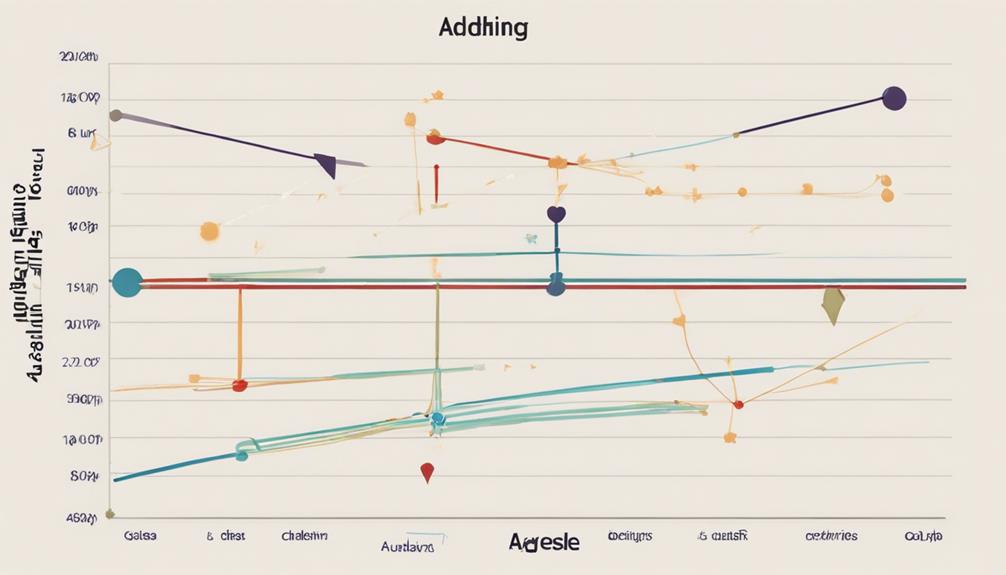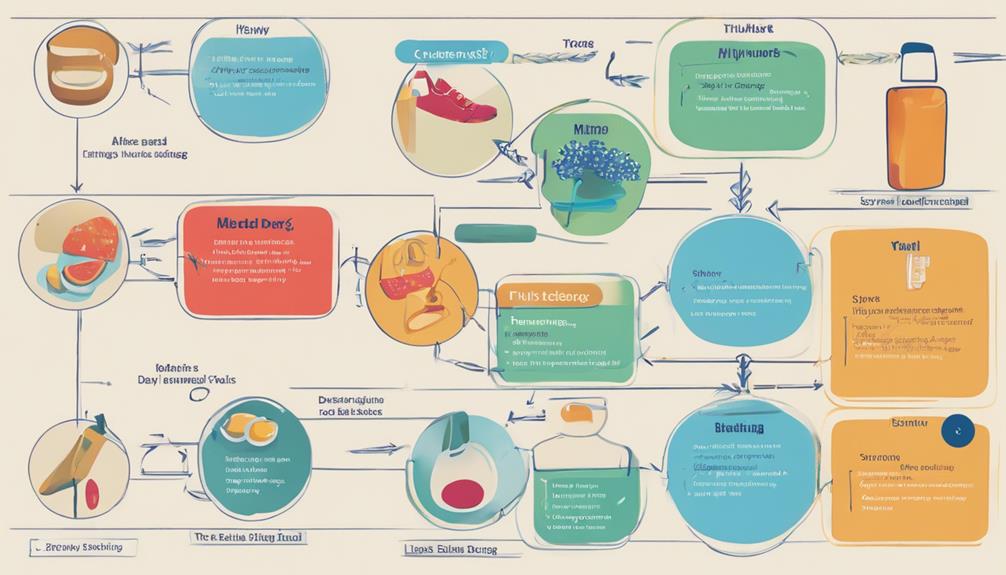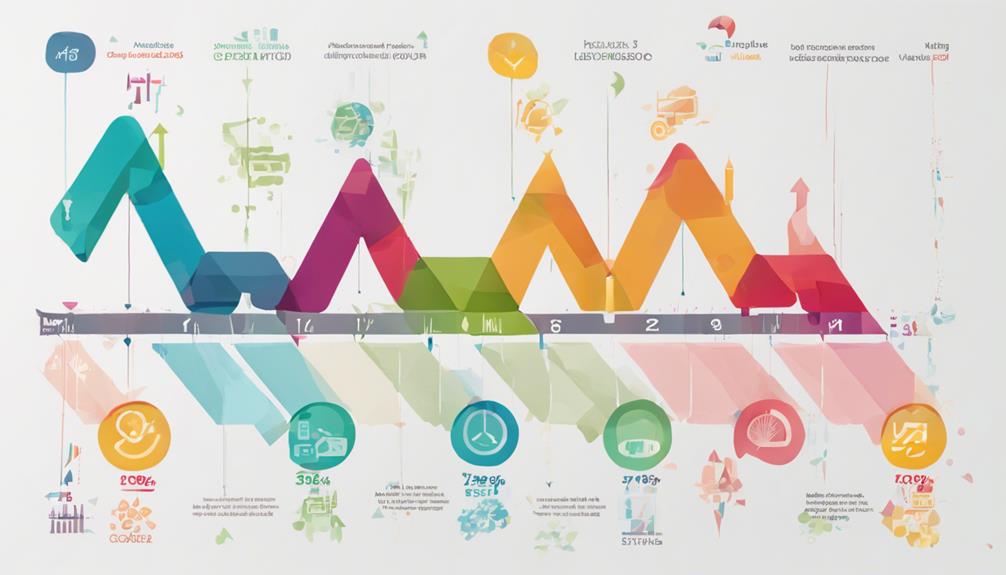As you navigate through the intricate landscape of ADL interpretation, remember that a well-crafted strategy can be your compass in understanding the nuances of daily living activities.
Each of the ten strategies holds a key to unlocking a deeper understanding of ADL dynamics, guiding you towards informed decision-making and improved outcomes.
With a blend of theoretical insights and practical applications, these strategies pave the way for a more nuanced approach to interpreting ADL data.
So, why not explore how these strategies can elevate your understanding and decision-making process in the realm of ADL interpretation?
Understanding ADL Interpretation Basics
To grasp the fundamentals of ADL interpretation, focus on the key aspects of assessing an individual's ability to perform essential self-care tasks. The Katz Index of ADL plays a crucial role in this evaluation by measuring independence levels in basic activities of daily living. These activities include bathing, dressing, toileting, transferring, continence, and feeding.
Through the Katz Index, individuals are scored based on their performance in these areas, ranging from full independence to severe impairment. This scoring system provides a clear index of the individual's functional status, aiding in planning appropriate interventions and support for those with functional limitations.
Widely used in ADL interpretation, the Katz ADL tool offers a standardized approach for assessing and monitoring an individual's functional abilities.
Importance of ADL Trends Analysis

Monitoring ADL trends plays a critical role in assessing functional abilities and guiding personalized care interventions. By analyzing Activities of Daily Living (ADL) trends, you can uncover patterns of functional decline or improvement over time. This longitudinal tracking is crucial for understanding disease progression and evaluating the effectiveness of treatments.
Consistent declines in specific ADLs can signal the need for targeted interventions, leading to improved outcomes in care planning. Predicting future care needs and adjusting support services accordingly become more manageable with ADL trends analysis. Moreover, monitoring these trends is essential for assessing the impact of interventions and adapting care plans to promote optimal independence.
Stay vigilant in observing ADL trends to enhance the quality of care provided and ensure tailored support for individuals.
Key Components of ADL Calculation

When considering ADL calculation, it's essential to understand the six key functions that encompass bathing, dressing, toileting, transferring, continence, and feeding. These functions are crucial for assessing functional independence in older adults.
To calculate ADLs accurately, you need to focus on the following key components:
- Assessing Functional Independence Levels
- Utilizing the Katz ADL Index for Evaluation
- Understanding the Importance of ADL Evaluation in Care Settings
- Predicting Health Changes and Planning Interventions
Interpreting ADL Breakouts and Patterns

Analyzing ADL breakouts and patterns provides valuable insights into the progression of functional decline in individuals with cognitive impairment. In dementia, bathing loss often precedes difficulties in dressing, toileting, and transferring, indicating a distinct pattern in ADL decline.
Grooming and eating are typically the last tasks to deteriorate as cognitive function worsens. Basic ADL activities like bathing and dressing decline earlier than instrumental tasks such as managing finances or transportation.
Each individual may experience a unique onset and rate of decline in ADL tasks, emphasizing the importance of understanding the hierarchy of ADL decline. This knowledge is crucial for predicting the level of care and support needed for individuals with cognitive impairment.
Utilizing ADL in Technical Analysis

Utilize Average Daily Liquidity (ADL) in technical analysis to assess and evaluate a stock's trading volume efficiently.
- Use ADL to gauge the liquidity and trading activity of a stock over a specific period.
- Calculate ADL by adding volume on days with higher closing prices and subtracting volume on days with lower closing prices.
- Positive ADL values indicate accumulation, while negative values suggest distribution of the stock.
- Analyze ADL trends for potential insights into buying or selling opportunities in the market.
Common Mistakes in ADL Interpretation

You may encounter common mistakes in ADL interpretation, such as misunderstanding ADL activities and overlooking environmental factors.
Failing to consider the impact of the surroundings and individual variations in task performance can lead to inaccuracies in assessing ADL abilities.
Ignoring cognitive and physical fluctuations, and misattributing difficulties without involving the individual can skew the interpretation of ADL assessments.
Misunderstanding ADL Activities
Misunderstanding ADL activities can lead to significant errors in assessing an individual's level of functional independence. When interpreting ADL tasks, it's crucial to consider the complexity and impact of these activities on daily living.
Common mistakes include overlooking individual variations and preferences, which can result in inaccurate evaluations of functional status. Failure to understand the importance of each ADL task may lead to inappropriate care planning and support strategies for the care recipient.
To ensure accurate assessments and effective interventions, proper education and training on ADL interpretation, including utilizing tools like the Katz Index of Independence, are essential. Avoiding these pitfalls is key to providing tailored support and promoting independence effectively.
- Overlooking the complexity and impact of ADL tasks
- Underestimating individual variations and preferences
- Failure to understand the importance of each ADL task
- Inaccurate evaluations leading to inappropriate care planning.
Overlooking Environmental Factors
When assessing an individual's level of functional independence, it's crucial to not overlook the significant impact that environmental factors can have on ADL performance and overall autonomy.
Environmental factors such as home setup, lighting, and accessibility play a vital role in determining one's ability to carry out activities of daily living effectively. Failure to consider environmental modifications like grab bars, non-slip surfaces, or adaptive equipment may impede accurate ADL interpretation.
Additionally, the influence of social support, caregiver assistance, and assistive devices on ADL execution shouldn't be underestimated. Overlooking these factors can result in incomplete assessments and hinder individuals from achieving optimal independence.
Therefore, acknowledging and addressing environmental barriers and leveraging supportive measures are essential for enhancing ADL functioning and improving quality of life.
Advanced Strategies for ADL Evaluation

To enhance the thoroughness of ADL evaluations, incorporating a combination of performance-based assessments, observational tools, self-report measures, and technology-based assessments is essential. When evaluating older adults' quality of life and independent living skills, consider the following advanced strategies:
- Utilize performance-based assessments like the Functional Independence Measure (FIM) or Barthel Index for a comprehensive evaluation of ADL functioning.
- Consider using observational tools such as the Assessment of Motor and Process Skills (AMPS) to assess the quality of ADL performance.
- Incorporate self-report measures like the Lawton Instrumental Activities of Daily Living (IADL) Scale to gather information on independent living skills.
- Explore technology-based assessments like electronic ADL tools to track ADL performance and monitor changes over time.
Incorporating ADL in Trading Decisions

Incorporating ADL considerations in trading decisions involves analyzing how changes in activities of daily living impact specific industries or sectors. This analysis can provide valuable insights into market trends and investment opportunities. Monitoring ADL trends related to older adults and health problems offers a unique perspective on consumer behavior, healthcare demands, and economic shifts.
Understanding the correlation between daily living data and market performance enables informed decision-making based on real-world indicators. By assessing demographic trends, healthcare innovations, and lifestyle changes, investors can anticipate market movements more accurately.
Utilizing ADL information enhances risk assessment, portfolio diversification, and strategic planning in the financial markets. This ultimately leads to more informed and potentially profitable trading decisions.
Enhancing ADL Predictive Power

To enhance ADL predictive power, focus on data-driven analysis and predictive modeling techniques.
Utilize detailed data sets and advanced algorithms to extract meaningful insights.
Data-Driven ADL Analysis
Utilizing information on ADL performance to enhance predictive power for future health outcomes involves analyzing trends and patterns in ADL functioning over time. Incorporating quantitative data on Instrumental Activities of Daily Living (IADL) and daily living (ADL) performance can offer valuable insights into an individual's health trajectory. Through data-driven ADL analysis, healthcare providers can identify early signs of functional decline and potential health risks, enabling timely interventions.
Statistical modeling techniques applied to ADL data help in understanding the progression of cognitive impairment and its impact on daily activities. By leveraging data-driven ADL analysis, personalized care plans can be developed to support individuals in maintaining independence and enhancing their overall quality of life.
- Analyzing trends and patterns in ADL functioning
- Identifying early signs of functional decline
- Understanding the progression of cognitive impairment
- Developing personalized care plans
Predictive Modeling Techniques
Enhancing the predictive power of ADL interpretation involves implementing advanced predictive modeling techniques. By utilizing predictive modeling techniques, such as machine learning algorithms, longitudinal ADL assessments can be analyzed to forecast changes in independence accurately.
These models, incorporating various predictors like cognitive status and physical health, can effectively estimate future ADL functioning and identify early signs of decline in older adults. Moreover, advanced statistical methods play a crucial role in creating personalized ADL trajectories tailored to individuals based on their unique characteristics and risk factors.
Through the integration of these predictive modeling techniques into ADL interpretation, healthcare professionals can enhance their ability to predict and plan for potential functional declines in individuals, leading to more proactive and personalized care strategies.
How Can I Use the Strategies for ADL Interpretation in the Three-Step Guide?
When faced with interpreting ADL indicator steps, it’s essential to follow a three-step guide. First, thoroughly review the assessment tool. Second, consider the client’s abilities and limitations. Finally, examine the environmental factors. By following these strategies, you can accurately interpret ADL indicator steps and provide appropriate care.
:How Do the Five Steps in Advance Decline Line Analysis Compare to the 10 Strategies in the ADL Interpretation Guide?
The fivestep advance decline analysis includes five distinct stages that are used to assess market trends and predict future movements. In contrast, the ADL Interpretation Guide outlines ten specific strategies for interpreting the advance decline line data. Both methods offer valuable insights for traders and investors.
Fine-Tuning ADL Interpretation Skills

Fine-tuning your ADL interpretation skills requires a comprehensive assessment of individuals' functional abilities in daily tasks, considering cognitive, physical, and environmental factors influencing performance. When refining your skills, focus on these key aspects:
- Individuals' Ability: Evaluate each person's unique strengths and limitations in performing ADLs.
- Cognitive Factors: Analyze how cognitive functions impact task completion and independence.
- Environmental Factors: Assess how the surroundings influence an individual's ADL performance.
- Task Execution Patterns: Recognize trends in task performance to tailor interventions effectively.
Frequently Asked Questions
What Are the Methods of ADL Evaluation?
To evaluate ADL, you can use direct observation, self-reporting, caregiver reports, performance-based assessments, and tools like the Katz Index. These methods offer valuable insights into individuals' capabilities, subjective views, changes over time, and structured evaluations of independence.
What Are 3 Tasks That Would Be Assessed as Part of the ADL Assessment?
When assessing ADLs, three key tasks evaluated are bathing, dressing, and toileting. These activities offer valuable insights into one's functional independence and help identify areas where additional support may be needed for daily living.
What Are the 5 Basic Adls?
The 5 basic ADLs are bathing, dressing, toileting, transferring, and eating. They are vital for personal hygiene, mobility, and nutrition. Assessing independence in these tasks is key for evaluating functional abilities and overall well-being.
How Do You Teach ADL Skills?
To teach ADL skills effectively, break tasks into steps, use visual aids, verbal cues, and hands-on demos. Encourage practice for muscle memory. Provide positive reinforcement, praise, and feedback. Tailor methods to individual preferences and abilities for optimal learning.
Conclusion
You have now mastered the 10 best strategies for ADL interpretation guide, becoming a pro at analyzing trends, calculating key components, and making informed trading decisions.
Your skills are so sharp, they could cut through even the toughest market conditions like a hot knife through butter.
Keep fine-tuning your ADL interpretation skills and watch your success soar to new heights in the world of trading.
Congratulations on your expertise!


